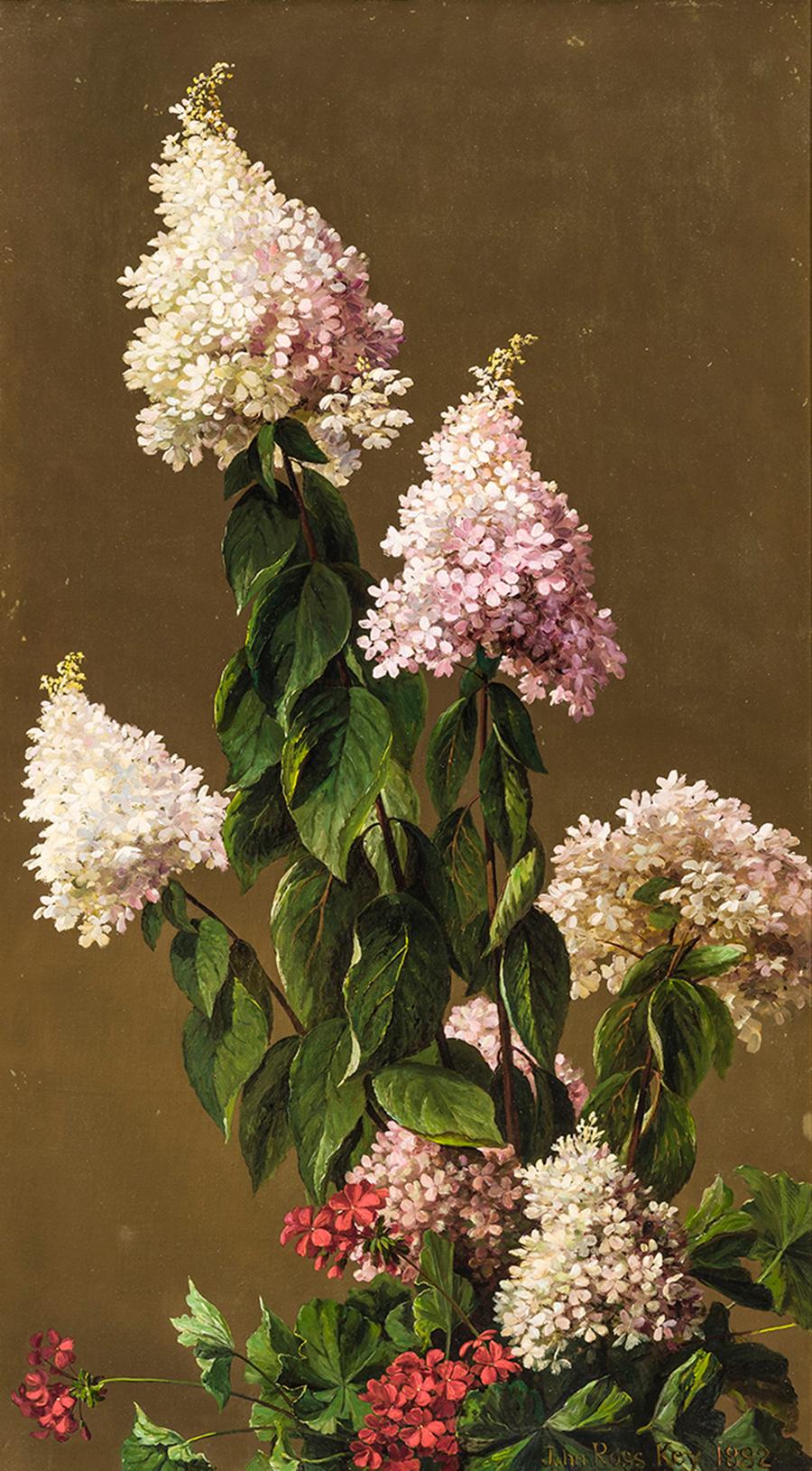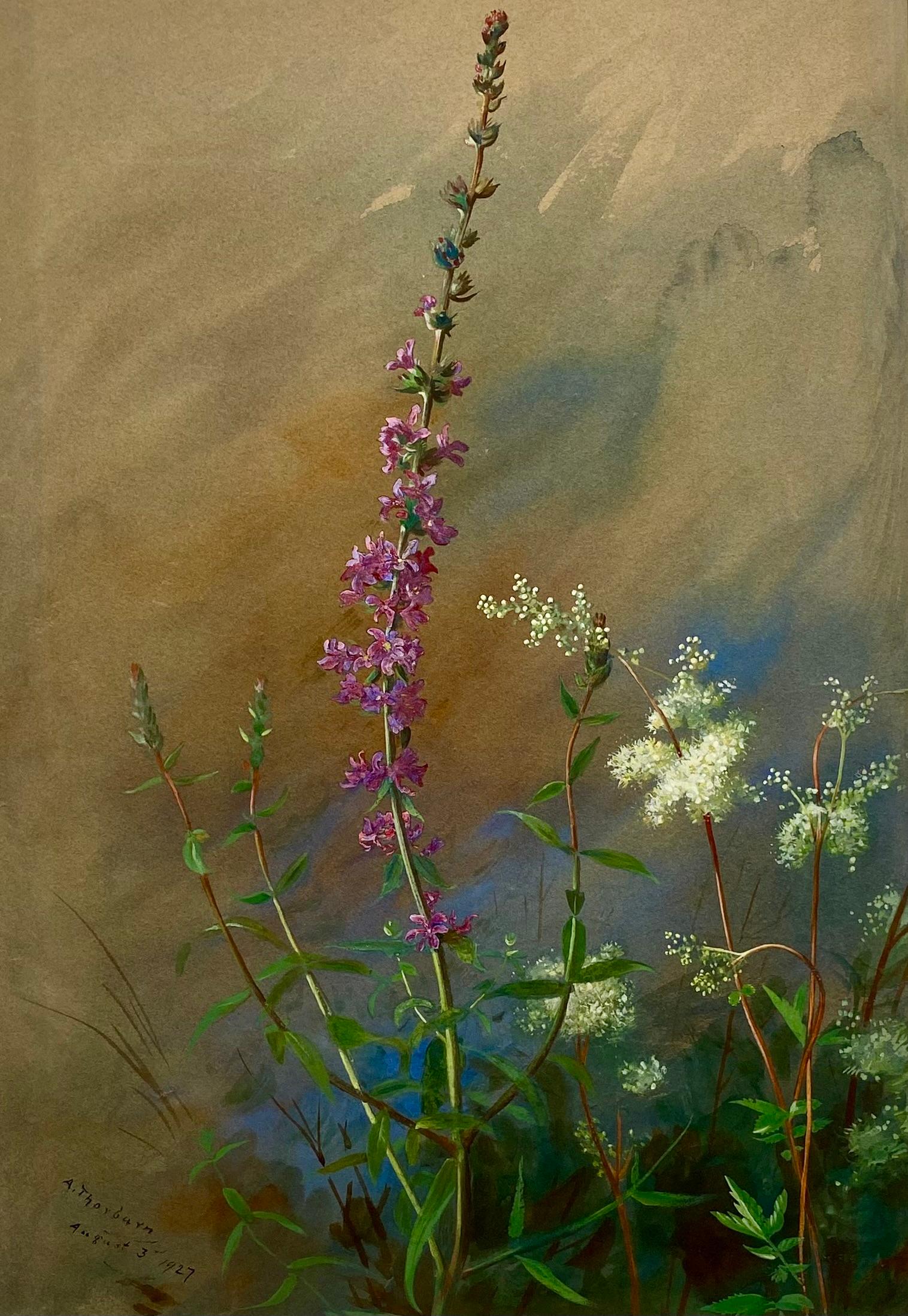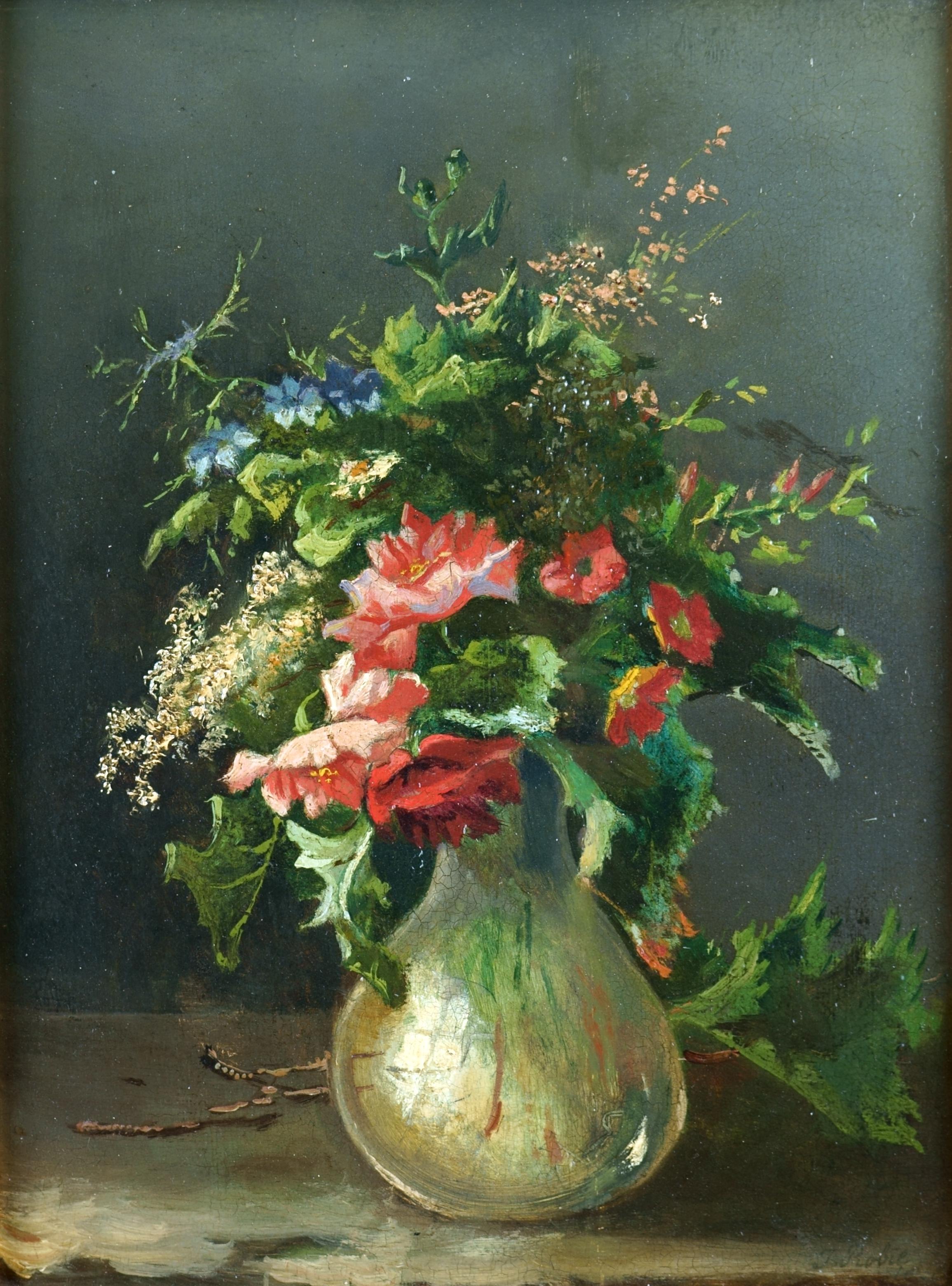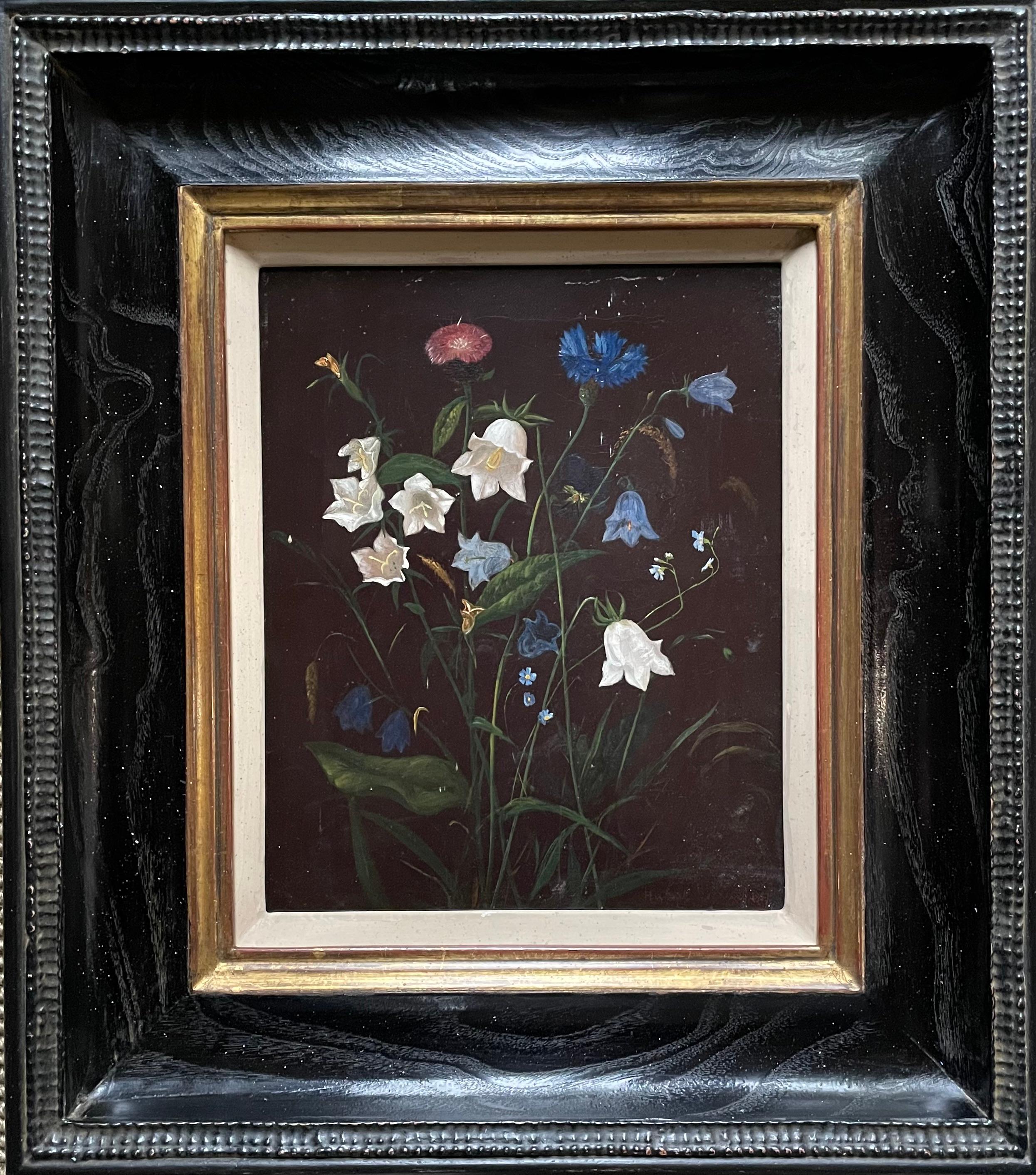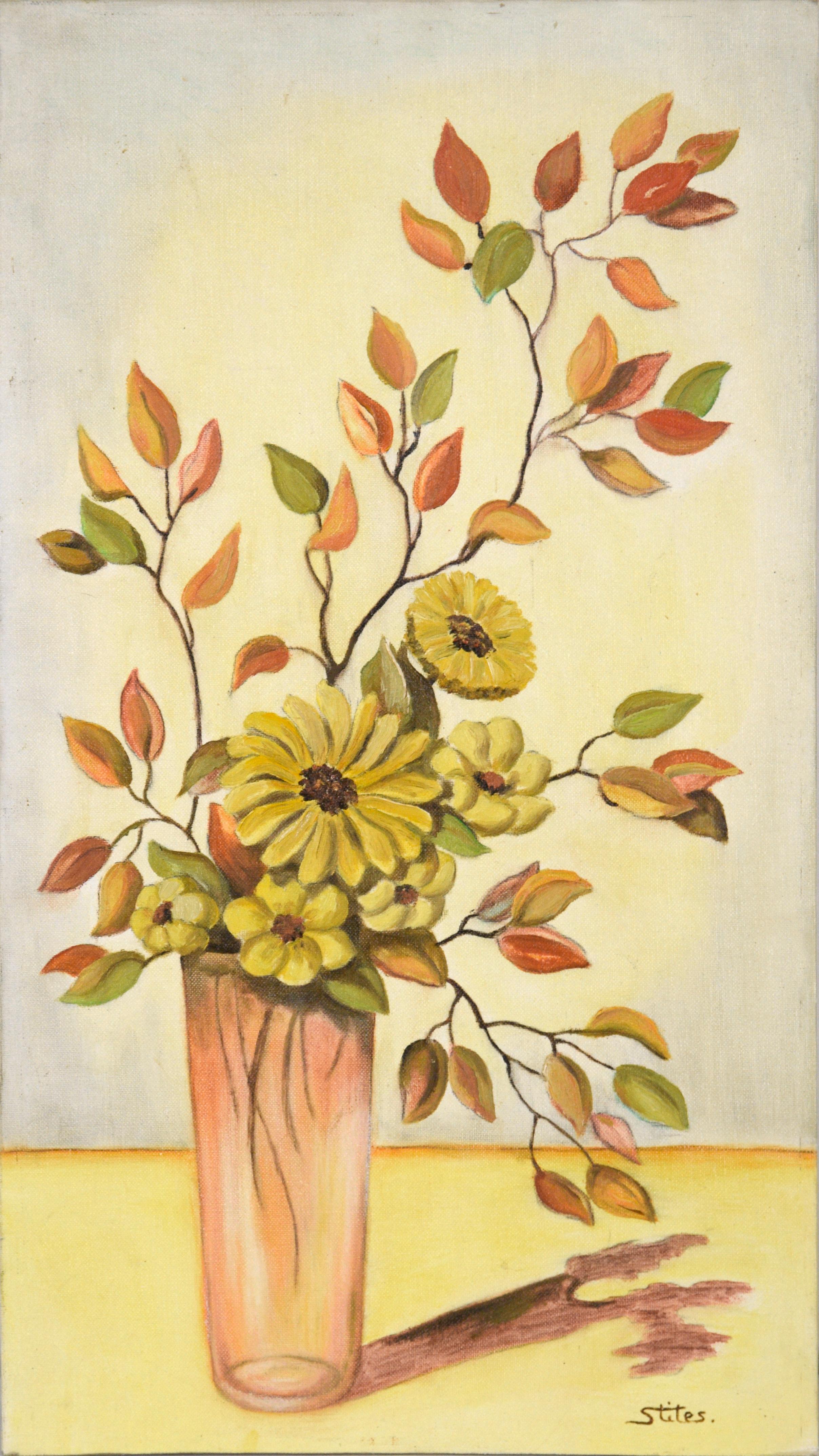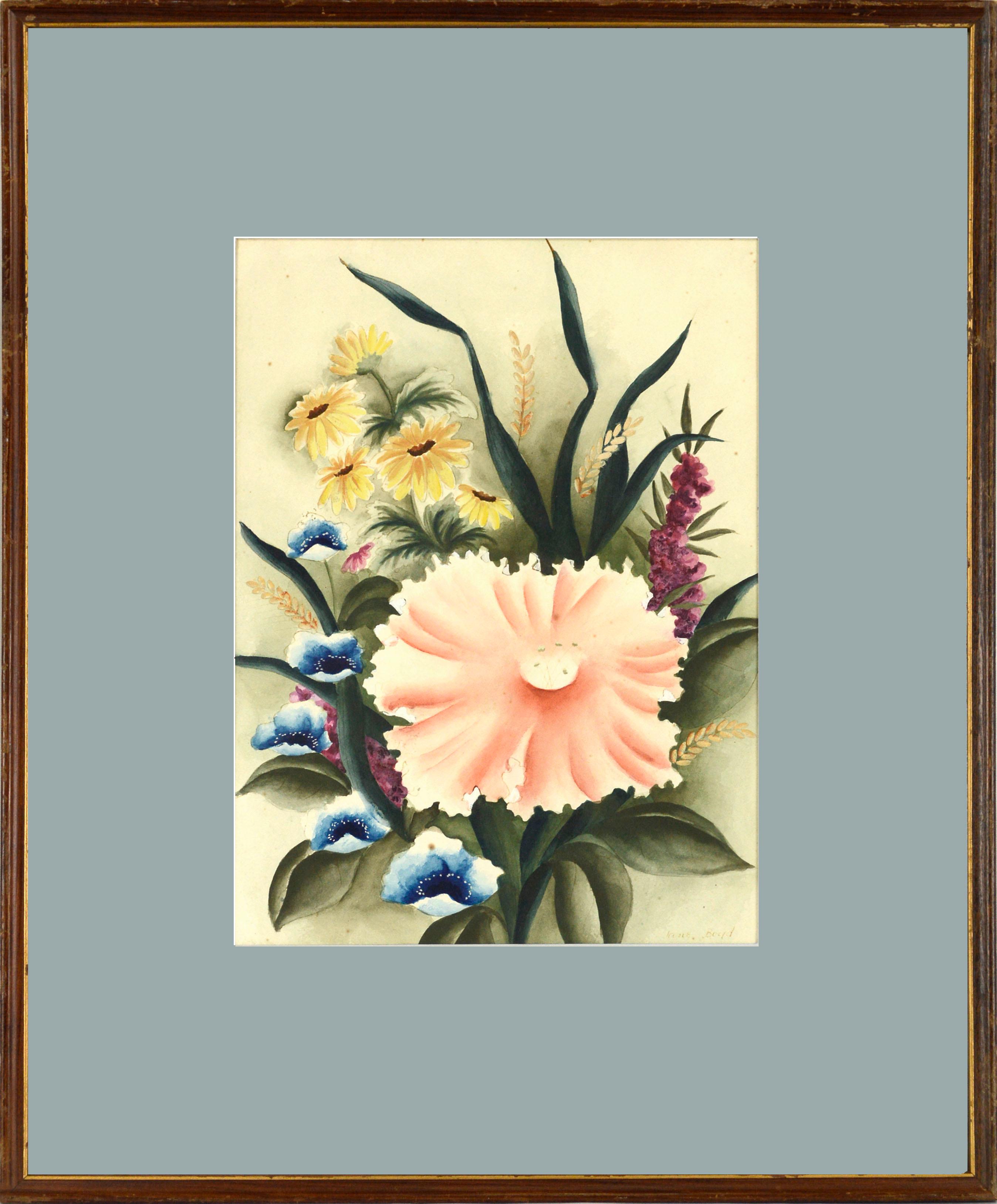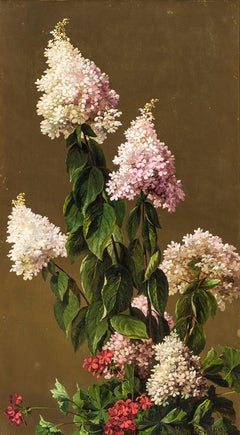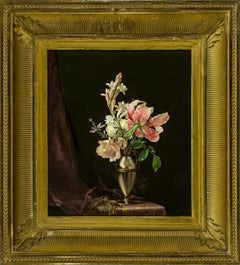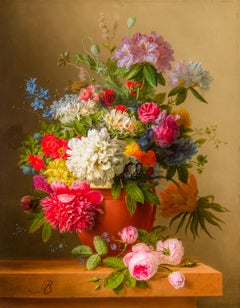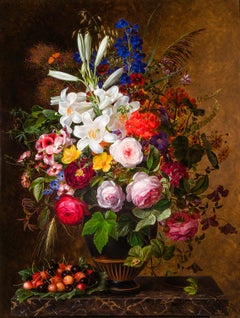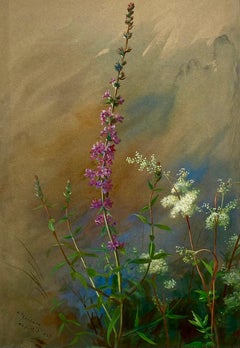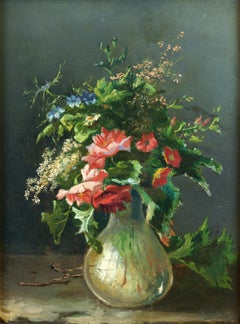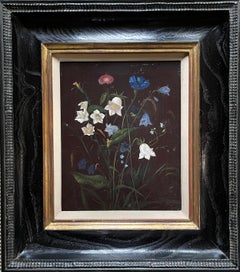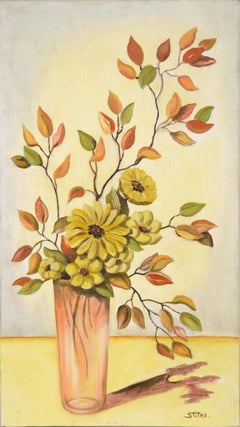Items Similar to Golden Rod and other Wildflowers
Want more images or videos?
Request additional images or videos from the seller
1 of 8
John Ross KeyGolden Rod and other Wildflowers1882
1882
$50,000
£37,959.15
€43,417.17
CA$69,857.25
A$77,696.51
CHF 40,570.70
MX$945,483.90
NOK 518,149.80
SEK 485,933.10
DKK 324,038.96
Shipping
Retrieving quote...The 1stDibs Promise:
Authenticity Guarantee,
Money-Back Guarantee,
24-Hour Cancellation
About the Item
Signed (at lower right): John Ross Key 1882
- Creator:John Ross Key (1832 - 1920, American)
- Creation Year:1882
- Dimensions:Height: 36 in (91.44 cm)Width: 20 in (50.8 cm)Depth: 1.5 in (3.81 cm)
- Medium:
- Movement & Style:
- Period:
- Condition:
- Gallery Location:New York, NY
- Reference Number:Seller: APG 8938.0011stDibs: LU236657842
About the Seller
5.0
Recognized Seller
These prestigious sellers are industry leaders and represent the highest echelon for item quality and design.
Established in 1952
1stDibs seller since 2010
35 sales on 1stDibs
Typical response time: 3 hours
Associations
Art Dealers Association of America
- ShippingRetrieving quote...Shipping from: New York, NY
- Return Policy
Authenticity Guarantee
In the unlikely event there’s an issue with an item’s authenticity, contact us within 1 year for a full refund. DetailsMoney-Back Guarantee
If your item is not as described, is damaged in transit, or does not arrive, contact us within 7 days for a full refund. Details24-Hour Cancellation
You have a 24-hour grace period in which to reconsider your purchase, with no questions asked.Vetted Professional Sellers
Our world-class sellers must adhere to strict standards for service and quality, maintaining the integrity of our listings.Price-Match Guarantee
If you find that a seller listed the same item for a lower price elsewhere, we’ll match it.Trusted Global Delivery
Our best-in-class carrier network provides specialized shipping options worldwide, including custom delivery.More From This Seller
View AllHydrangeas and Other Garden Flowers
By John Ross Key
Located in New York, NY
Signed (at lower right): John Ross Key 1882
Category
Late 19th Century American Realist Still-life Paintings
Materials
Canvas, Oil
Still Life with Flowers in a Vase
By Martin Johnson Heade
Located in New York, NY
Oil on canvas
Category
19th Century Still-life Paintings
Materials
Oil
Still Life of Peonies, Roses, Honeysuckle, Poppies, and other Flowers
Located in New York, NY
This painting demonstrates the source of Arnoldus Bloemers’ enduring popularity. A profusion of peonies, honeysuckle, and poppies share the confines of a terracotta urn sitting on a ...
Category
19th Century Romantic Still-life Paintings
Materials
Oil
Lilies, Orange and Pink Pelargonium, Roses, and other Flowers in a Greek Vase
By Johan Laurentz Jensen
Located in New York, NY
From 1833 to 1835 Johan Laurentz Jensen lived in France and Italy; while in Rome, he was considered the most prominent painter in an extensive colony of Scandinavian artists there. I...
Category
19th Century Romantic Still-life Paintings
Materials
Oil, Panel
Garden Flowers
By Charles Demuth
Located in New York, NY
Charles Demuth was one of the most complex, talented, and deeply sensitive artists of the American modern period. Whether he was painting floral still lifes, industrial landscapes, or Turkish bathhouses, art was, for Demuth, fraught with personal meaning. A fixture of the vanguard art scene in New York, Demuth navigated the currents of Modernism, producing some of the most exquisite watercolors and original oil paintings in twentieth-century American art.
Demuth was born in Lancaster, Pennsylvania, the only child of a well-to-do family. He had an awkward and introverted childhood shaped by a childhood illness, Perthes, a disease of the hip that not only left him permanently lame, but, as part of the “cure,” bedridden for two years in the care of his mother. This long period of incapacitation had a deep impact on Demuth, who came to see himself as an invalid, an outsider who was different from everyone else. It was perhaps during this period of indoor confinement that his keen interest in art developed. Several relatives on his father’s side had been amateur artists, and, following his convalescence, his mother encouraged his artistic pursuits by sending him to a local painter for instruction. The majority of his early pictures are of flowers, a subject for which Demuth maintained a lifelong passion.
Following high school, Demuth enrolled at the Drexel Institute of Art in Philadelphia, a school renowned for its commercial arts program. He advanced through the program rapidly, and, in 1905, at the encouragement of his instructors, he began taking courses at the Pennsylvania Academy of the Fine Arts. The two leading teachers then at the Academy were William Merritt Chase and Thomas Anshutz. Anshutz, himself a former student of Thomas Eakins, was well liked by his students, and is best known as the teacher of Robert Henri, John Sloan, and several of the other artists of the Ashcan School. Demuth, too, adopted a similar idiom, working in a controlled, realistic manner while at the Academy, where he remained until 1910.
In 1907, Demuth made his first trip to Europe, staying in Paris. He spent time on the periphery of the art scene composed of the numerous American artists there, including John Marin and Edward Steichen. He returned to Philadelphia five months later, and immediately resumed courses at the Academy. Despite his introduction to advanced modern styles in Europe, Demuth’s work of this period retains the academic style he practiced before the trip. It wasn’t until he had summered at New Hope, Pennsylvania, in 1908 and 1911, that his style began to evolve. New Hope was a prominent American Impressionist art colony whose members were largely affiliated with the Pennsylvania Academy. Demuth dropped the conservative tone of his style and adopted a freer and more colorful palette.
Although he remained based in Philadelphia, Demuth frequently went to New York during this period. Many of the same American artists of the Parisian art scene Demuth had encountered on his earlier European trip now formed the nucleus of New York’s avant-garde, which centered around Alfred Stieglitz’s 291 gallery. It wasn’t long before Demuth began to apply modernist-inspired strategies to his work. He was particularly influenced by the watercolor work of John Marin, also a former student of Anshutz, whose bold use of color in the medium Demuth freely adapted into looser washes of color.
In 1912, Demuth again left for Paris, this time studying in the Académie Moderne, Académie Colorossi, and Académie Julian. In Paris Demuth met the American modernist Marsden Hartley. Hartley, a principal figure in the expatriate art circle, acted as a mentor to Demuth, and introduced him to the wide array of modern styles currently practiced in Europe. Hartley also introduced Demuth to many of the members of the Parisian avant-garde, including Gertrude Stein. Demuth was an aspiring writer, and he spent many hours in conversation with Stein. He wrote extensively during this period, and published two works shortly after his return to America. He also developed an interest in illustrating scenes from literary texts. From 1914 to 1919, Demuth produced a series of watercolors of scenes from books such as Emile Zola’s Nana and Henry James’s The Turn of the Screw.
Upon his return to America, Demuth settled in New York. In 1914, Demuth had his first one-man show at Charles Daniel’s gallery, which promoted emerging modern American artists, including Man Ray, Rockwell Kent, Yasuo Kuniyoshi, Stuart Davis, and Max Weber. Demuth drew closer to the artistic vanguard in New York, becoming friends with many in the Stieglitz and Daniel circles, including Georgia O’Keeffe, Marcel Duchamp, Carl Van Vechten, and Edward Fiske.
New York’s cosmopolitan atmosphere and active nightlife appealed greatly to Demuth. In a sketchy style well suited to watercolor, he painted many vaudeville and circus themes, as well as nightclub, café, and bathhouse scenes. Often with Duchamp, Demuth took part in an urban subculture replete with nightclubs, bars, drugs, and sexual permissiveness, which, for a homosexual artist like himself, allowed room for previously unattainable personal expression. Demuth’s pictures of sailors, bathhouses, and circus performers embody a sensual and sexual undercurrent, expressing the artist’s sense of comfort and belonging in the bohemian subculture of New York.
Simultaneously, Demuth deepened his interest in floral pictures, painting these almost exclusively in watercolor. His style evolved from the broad color washes of his earlier pictures to more spare, flattened, and sinuous compositions, inspired by the drawings of Aubrey Beardsley and other artists of the Aesthetic Movement. Demuth’s flower watercolors are moody and atmospheric, sensuous and elegant, introspective and yet full of expressive power. Moreover they are beautiful, and are unequivocally among the finest still lifes in American art. Despite numerous subsequent artistic undertakings that led him in a variety of directions, Demuth never stopped painting flower pictures, ultimately adding fruits and other still-life objects to his repertoire.
In 1916, Demuth began to develop a style later known as Precisionism, a form of landscape painting infused with Cubism, in which space is divided into precisely drawn geometric regions of color. Demuth first began to paint the landscape in an appropriated Cubist mode while on a trip with Hartley to Bermuda. In these early landscapes, in which the curvilinear forms of trees intersect the geometrically articulated architectural forms, Demuth explored ideas that shaped the future development of modernism in America.
The full realization of Demuth’s explorations came after his return to America in 1917, when he turned his attention to industrial subjects. These works derive from a “machine aesthetic,” espoused by New York artists such as Francis Picabia, Joseph Stella, Albert Gleizes, and Duchamp, by which artists viewed machines as embodying mystical, almost religious significance as symbols of the modern world. Rather than painting the skyscrapers and bridges of New York as did most of his like-minded contemporaries, Demuth returned to his home town of Lancaster, where he painted factories and warehouses in a Precisionist idiom. The titles for these pictures are often contain literary references, which serve as clues for the viewer to aid in the decoding of the artist’s meaning.
In 1923, Demuth planned a series of abstract “poster portraits” of his friends and contemporaries in the New York art and literary scene. In these “portraits,” Demuth combined text and symbolic elements to evoke the essential nature of his sitters’ distinguishing characteristics. In this fashion, he painted portraits of such artists as Georgia O’Keeffe, John Marin, and Arthur Dove. His most famous poster portrait, I Saw the Figure 5 in Gold...
Category
20th Century American Modern Still-life Drawings and Watercolors
Materials
Paper, Watercolor
Orchids and Lilies
By John Moore
Located in New York, NY
Signed and dated (at lower right): MOORE 21
Category
2010s Contemporary Still-life Paintings
Materials
Oil
You May Also Like
WILDFLOWERS
By Archibald Thorburn
Located in Marlborough, England
A beautifully detailed watercolour and gouache study of wildflowers.
Archibald Thorburn was born at Viewfield House in Lasswade near Edinburgh on 31 May 1860. He was the fifth son o...
Category
Early 20th Century Still-life Paintings
Materials
Watercolor, Gouache
Still life with meadow flowers - The beauty of meadow flowers -
Located in Berlin, DE
Jean-Baptiste Robie (1821 Brussels - 1910 ibid.). Still life with meadow flowers. Oil on wood, 24.5 x 18.5 cm (inside measurement), 37 x 31 cm (frame), signed and dated (difficult to...
Category
Early 1900s Naturalistic Still-life Paintings
Materials
Oil, Canvas
$3,067 Sale Price
20% Off
Hubert Henrard - 19th Century Belgian Still Life of wildflowers
Located in London, GB
HUBERT HENRARD
(Belgium 1816-1898)
Still Life with Cornflower and Harebells
Signed l.r.: Hubert Henrard
Oil on canvas
Framed
25 by 20.5 cm., 10 by 8 in.
(frame size 41.5 by 36.5 c...
Category
Late 19th Century Realist Still-life Paintings
Materials
Oil
Mid Century Still Life with Yellow Flowers and Orange Leaves
By Jean M. Stites
Located in Soquel, CA
Mid-Century still life by American artist Jean M. Stites of Fayetteville, North Carolina (b. 1929). A variety of yellow flowers are in a reddish vase, sur...
Category
1960s American Impressionist Still-life Paintings
Materials
Canvas, Oil, Cardboard
$360 Sale Price
20% Off
Wildflower Bouquet Still-Life
Located in Soquel, CA
Beautiful mid-century floral watercolor still-life of a bouquet of colorful wildflowers by Jane Boyd (20th Century), c.1960s. The beautiful bouquet features a coral pink flower in fu...
Category
Mid-20th Century Impressionist Still-life Drawings and Watercolors
Materials
Paper, Watercolor
$380 Sale Price
20% Off
Cecile Hertz-Eyrolles (1875-1974) Large Mid 20th Century Oil, Ode To Wildflowers
Located in Corsham, GB
A beautifully large, expressive piece depicting wildflowers arranged in a shallow vase on folded cloth. Signed to the lower right. Presented in a distressed gesso frame. Studio stamp...
Category
20th Century Still-life Paintings
Materials
Oil
More Ways To Browse
Antique Keys
American Still Life 19th Century
Antique Rod
Antique Rods
Golden Key
Vintage Animal Lithographs
Graphic Design Poster
Neoclassical Engraving
Ruins Engravings
Black And White Photos Dancing
Face Art Glass
Dutch Engravings
1970s French Print
Dior 1920s
Classical Architecture Prints
Outdoor Art Sculptures
French 19th Century Lithographs
Vintage Mosaic
